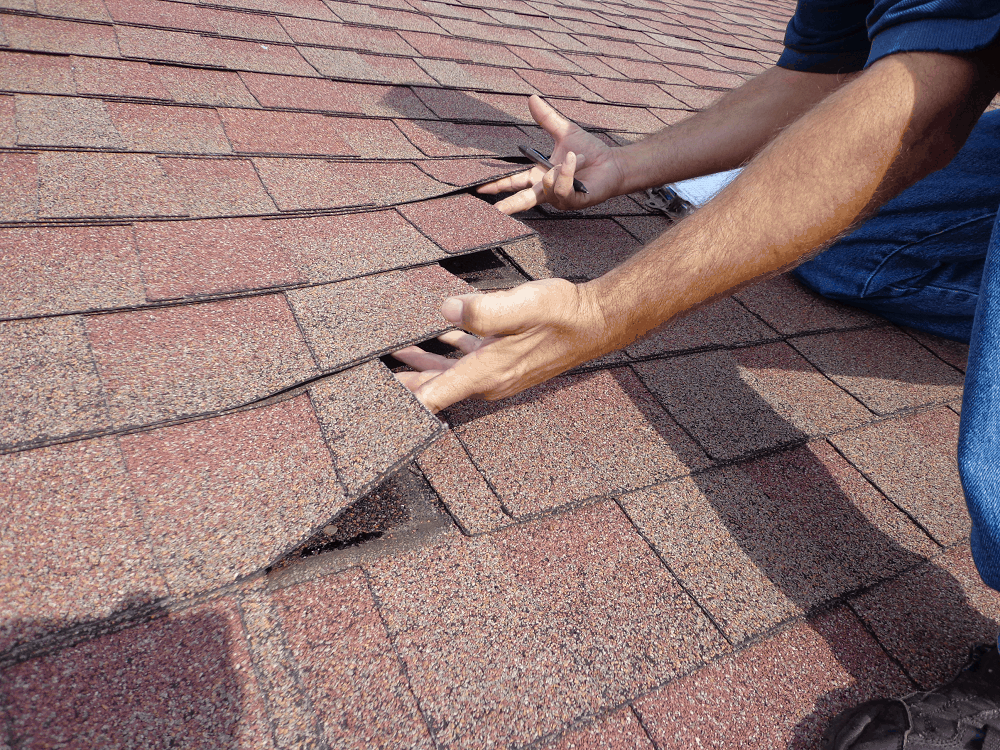The Essential Overview to Roofing Examination: Protecting Your Home Versus Typical Damage
Normal roofing system examinations are a crucial element of home upkeep that can prevent minor issues from intensifying right into considerable problems. Roof Inspection Austin TX. Home owners typically overlook the signs of wear, such as missing out on shingles or refined leaks, which can jeopardize the integrity of the entire framework. Understanding the significance of these analyses not just help in maintaining your roofing's life expectancy yet also improves power performance and total safety. As we check out the typical signs of roofing damage and efficient upkeep strategies, it becomes obvious that a proactive technique is crucial for securing your investment. What particular facets should you focus on throughout your next inspection?
Importance of Regular Roof Covering Inspections
Routine roof examinations are vital for maintaining the honesty of a building's structure. These assessments act as a proactive measure to identify potential problems prior to they rise into expensive fixings or significant damages. By performing routine examinations, property owners can ensure that their roof coverings remain in optimum condition, thus lengthening their life expectancy.
Throughout these inspections, numerous variables are evaluated, consisting of the problem of tiles, blinking, and drainage systems. Additionally, the presence of particles, moss, or algae can be discovered, enabling prompt removal. Attending to minor concerns beforehand can prevent extra substantial troubles, such as leaks or architectural degeneration, which might endanger the security of the building.
Moreover, normal roofing examinations add to power efficiency. A well-kept roof covering reduces warm loss throughout cooler months and lowers the pressure on heating and cooling systems. This, consequently, can lead to reduced utility bills and a reduced carbon impact.
Typical Signs of Roof Covering Damages
Recognizing common signs of roof covering damages is necessary for home owners to preserve the security and durability of their building. One of one of the most visible indicators is the existence of missing out on, cracked, or crinkled tiles. These problems can compromise the roofing system's integrity, leading to leaks and additional deterioration. Additionally, granule loss, usually visible in seamless gutters or on the ground, signals that roof shingles are maturing and shedding their protective capacities.
An additional essential sign is water stains on ceilings or wall surfaces inside the home, which commonly show leakages originating from the roofing. Homeowners ought to additionally examine for mold and mildew or mildew growth, as these can flourish in wet problems triggered by roofing leakages.
Blinking around chimneys and vents need to be inspected for rust or damage, as malfunctioning blinking can permit water to pass through the roof structure. Sagging locations on the roofing surface area might suggest structural problems, requiring instant attention. By recognizing these indications early, homeowners can take proactive measures to address roof covering damages, inevitably protecting their home from expensive repair work and ensuring a resilient roofing system.
Seasonal Roof Maintenance Tips
Recognizing the indicators of roof damage is just the initial step in guaranteeing the durability of your roofing system; continuous upkeep is just as essential. Seasonal roof covering maintenance is critical to not only extend the life of your roofing however additionally to avoid costly repair services down the line.
Throughout springtime, evaluate your roof for any signs of wintertime damage, such as cracked tiles or displaced blinking. Tidy investigate this site rain gutters and downspouts to make sure proper drainage. In summer, look for moss or algae growth, and consider applying a protective sealant to avoid moisture buildup.
As autumn approaches, get rid of fallen leaves and debris from your roof covering and gutters. This will certainly help minimize the threat of water pooling and potential leaks. It's likewise a great time to examine the roof covering for any type of signs of wear, such as loosened shingles or rusted flashing.
DIY Roofing Examination List
An extensive DIY roofing assessment list is necessary for home owners aiming to keep the honesty of their roof. Begin by checking out the roof covering surface area for any kind of noticeable indications of damage, such as missing, cracked, or crinkling tiles - Roof Inspection. Pay attention to locations around vents, chimneys, and skylights, as these are typical leak factors

Relocating to the interior, check the attic room for signs of water invasion, such as discolorations or mold growth. Make certain proper ventilation to stop moisture accumulation, which can cause deterioration.
When to Work With a Professional,##.
While numerous home owners can perform basic roofing system examinations, particular circumstances require the experience of a professional. If you spot considerable damages, such as big missing out on tiles, noticeable sagging, or water discolorations on the ceiling, it is crucial to speak with a qualified professional roofer. These problems might suggest underlying structural issues that need instant interest.
Furthermore, if your roofing system is nearing the end of its expected lifespan-- typically 20 to 25 years for asphalt shingles-- it is important to have a professional analysis. Experienced assessors can analyze the roofing's problem and offer informed recommendations on repair work or replacement.
Severe weather occasions, such as hailstorms or heavy winds, also necessitate specialist examination. If left uncontrolled, also minor damages can lead to substantial problems. Additionally, if you're considering selling a property or acquiring, an expert inspection can reveal prospective concerns that may affect the purchase.
Final Thought
Regular roof inspections are essential for keeping the honesty of property structures. Prioritizing roof inspections inevitably adds to a risk-free and protected living setting.

Throughout spring, inspect your roofing system for any type of indications of winter months damages, Read Full Article such as fractured tiles or displaced blinking. Begin by examining the roofing system surface for any type of visible indications of damage, such as missing, broken, or curling roof shingles.